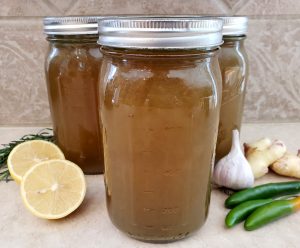 With the cool, crisp days of fall finally here, it is an amazing time to welcome in Vata-soothing remedies to keep your body and mind in balance and ward away cold, cough, and flu. There are many ways to accomplish this, but perhaps one of the most effective ways is to drink a cup of bone broth each day. But not all bone broth is made alike. This is my favorite, most frequently used bone broth recipe, and for great reason. It is simple to make, very versatile and flexible in ingredients, allows me to use up any vegetables in my fridge, and has a slightly different flavor each week. Needless to say, this is one of my fall (and winter) healthcare essentials!
With the cool, crisp days of fall finally here, it is an amazing time to welcome in Vata-soothing remedies to keep your body and mind in balance and ward away cold, cough, and flu. There are many ways to accomplish this, but perhaps one of the most effective ways is to drink a cup of bone broth each day. But not all bone broth is made alike. This is my favorite, most frequently used bone broth recipe, and for great reason. It is simple to make, very versatile and flexible in ingredients, allows me to use up any vegetables in my fridge, and has a slightly different flavor each week. Needless to say, this is one of my fall (and winter) healthcare essentials!
Why bone broth?
Bone broth has gained a lot of popularity lately, but in reality, this has been a dietary staple in many traditions for thousands of years. No matter which perspective you are coming from, it is undeniable that bone broth possesses a wealth of healing properties and nutrients in a simple, natural, easy-to-digest, easy-to-absorb manner.
I personally drink bone broth daily to increase my protein intake (a collagen-rich recipe like this has about 10 to 12 grams of protein per cup), keep my bowels regular, keep my joints lubricated, and reduce inflammation in my gut. As I dive into my fourth decade of life, I find bone broth to be a very beneficial part of my Rasayana (rejuvenation) regimen that keeps me aging a bit more ease-fully. But more than anything, my body craves it and I feel noticeably stronger, more energized, and get sick less often when I drink it regularly.
Bone broth is a great in-between meal snack; it is light yet it sustains my energy, blood sugar, and appetite until it is time to eat the next meal. And whether I drink it plain; with added spices, salt, and lemon; or with a scoop of tahini blended in (YUM!), I truly enjoy the taste and feel instantly calmer as I sip on a cup.
Looking through the lens of Ayurveda, bone broth is suitable for all dosha types. It calms, strengthens, and lubricates Vata; soothes Pitta-related inflammatory conditions; and is a great low-calorie, low-fat, low-carb, nutrient-dense food choice for Kapha types. It can be enjoyed all year round, although because of its warm and grounding nature, it is most healing during the fall and winter seasons.
If you are not convinced yet, here is a general list of some of the most notable health benefits of drinking bone broth regularly.
Health Benefits of Bone Broth
- Tridoshic; suitable for all dosha types (but best for Vata)
- Supports bone and joint health
- Supports kidney and adrenal health
- Supports digestive health
- Softens stools
- Alleviates constipation, gas, and bloating
- Heals, soothes, and protects the membrane of the GI tract
- Useful in leaky gut syndrome and most inflammatory GI conditions
- Alleviates arthritic conditions
- Anti-inflammatory
- Calms the mind; nourishes the nervous system
- Beneficial in sleep disorders
- Increases overall energy
- Strengthens immunity; great during sickness or for sickness prevention
- Increases skin, nail, and hair health
- Great source of easy-to-absorb nutrients including collagen (which is a protein), gelatin, and glycine; adding veggies and spices adds to its vitamin content and health benefits
- Low in fat, carbs, calories, and sodium (this particular recipe is salt-free)
What is collagen?
Collagen is a structural protein that is one of the main components of your connective tissues (ligaments, tendons, cartilage, bones), muscles, hair, and skin. Collagen is involved in bone health, muscle health, skin elasticity, hair strength and sheen, and tissue regeneration. It also plays an important role in immune response and cellular communication. Not too surprisingly, collagen production declines as we age.
Taking in a food-based collagen source rather than taking a collagen powder or supplement is always the best route in my book. This particular bone broth recipe promotes a collagen-rich result by using the feet of the chicken which provide more collagen than any other part of the chicken. I am blessed to get my chicken parts from a small, local, family-owned farm, and I suggest you do the same, if possible. If you are not able to have this luxury in your area, many local butchers and health food grocery stores have these parts available to the public as well.
Is it alright to eat bone broth in an Ayurvedic diet?
The short answer is YES! It is a common misconception that an Ayurvedic diet has to be vegetarian. Although this is true in the Yoga tradition, Ayurveda has actually been using meat products as medicine since this science began over 5000 years ago. If you are still skeptical, you may be reassured when you find various types of meat and “meat juice” being prescribed in such ancient Ayurvedic texts as the Charaka Samhita. A list of animals and their properties as food can also be found in Bhavaprakasha, another essential authoritative text of traditional Ayurveda.
I am by no means trying to convert anyone to eating animal products, as I have full respect for each individual’s choices in this matter. When a person is open to drinking bone broth, however, I must say I prescribe it in my clinic quite often. When an individual is set on eating a strict plant-based diet, there are always other ways to find balance and health.
So with this being said, bone broth has great potential as medicine if it is right for you. If you try it and find you do not digest it well for any reason (causes gas, bloating, loose stools, or whatever), then no matter how “healing” bone broth is, it is not healing for you. If you are open to animal-based products and feel bone broth may be beneficial for you, I would highly recommend giving this recipe a try and seeing if it is suitable for your digestive and healthcare needs.
So without further ado…
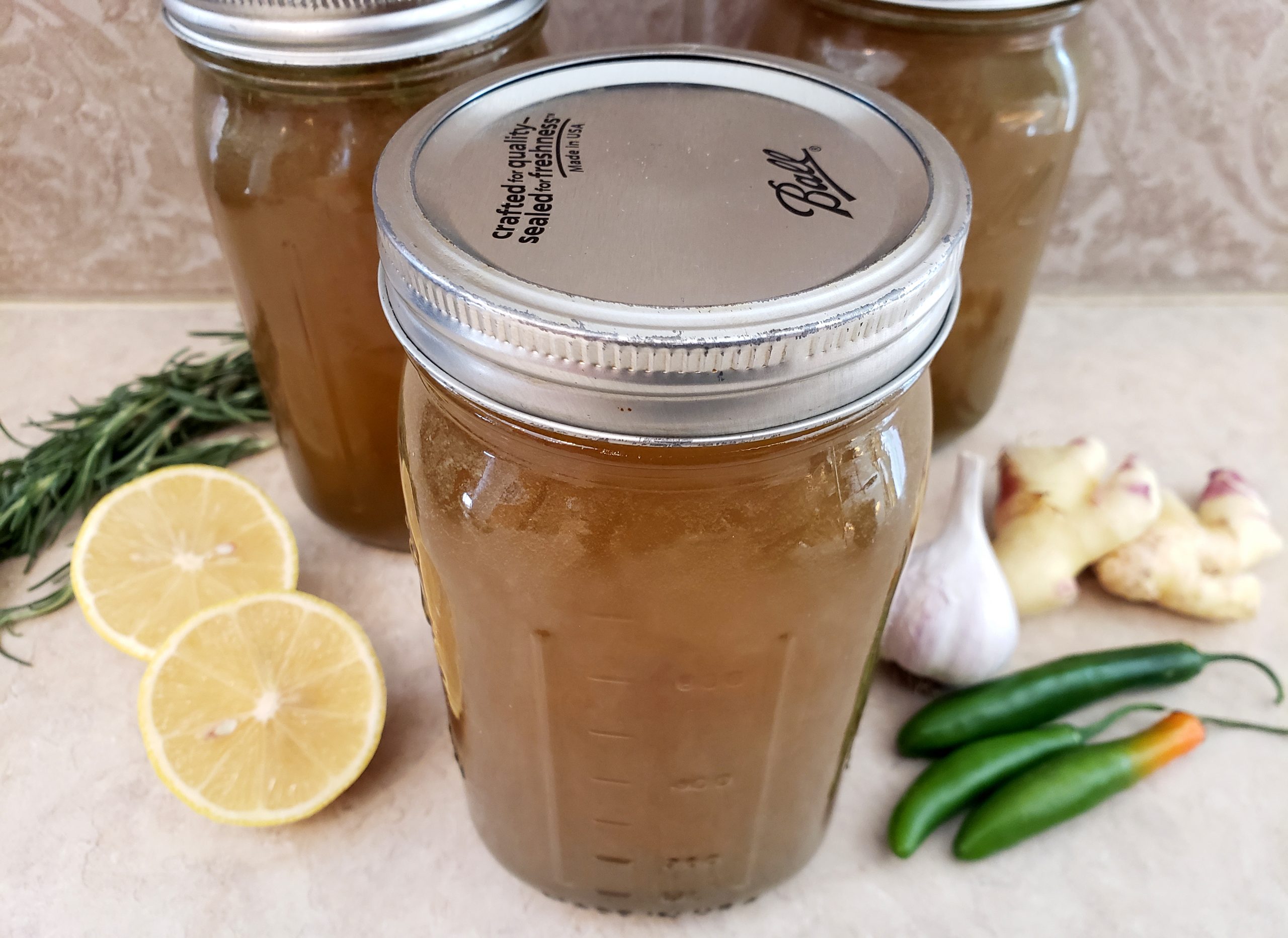
Collagen-Rich Slow Cooker Bone Broth Recipe
- Doshic Effect: Vata↓, Pitta ↓, Kapha↓*
- Makes: about 1 gallon (16 cups), depending on your crock pot size
- Prep time: 20 minutes
- Cook time: 12 to 24 hours
- Strain and clean-up time: 45 to 60 minutes
*To avoid increasing Kapha, it is recommended for Kapha types to scrape off the layer of fat that floats to the top after cooling the broth.
Materials
- 1½ to 2-gallon crock pot (I really like this one*)
- Knife and cutting board
- Large mesh strainer
- Gallon-size pot (for straining into after the broth is complete)
- Utensil for scooping such as a 2-cup measuring cup (or anything similar)
- Air-tight glass jars for storage (enough for about 16 cups of liquid)
*As an Amazon affiliate, by ordering directly through this link you are helping to support Svastha Ayurveda – Thank you!
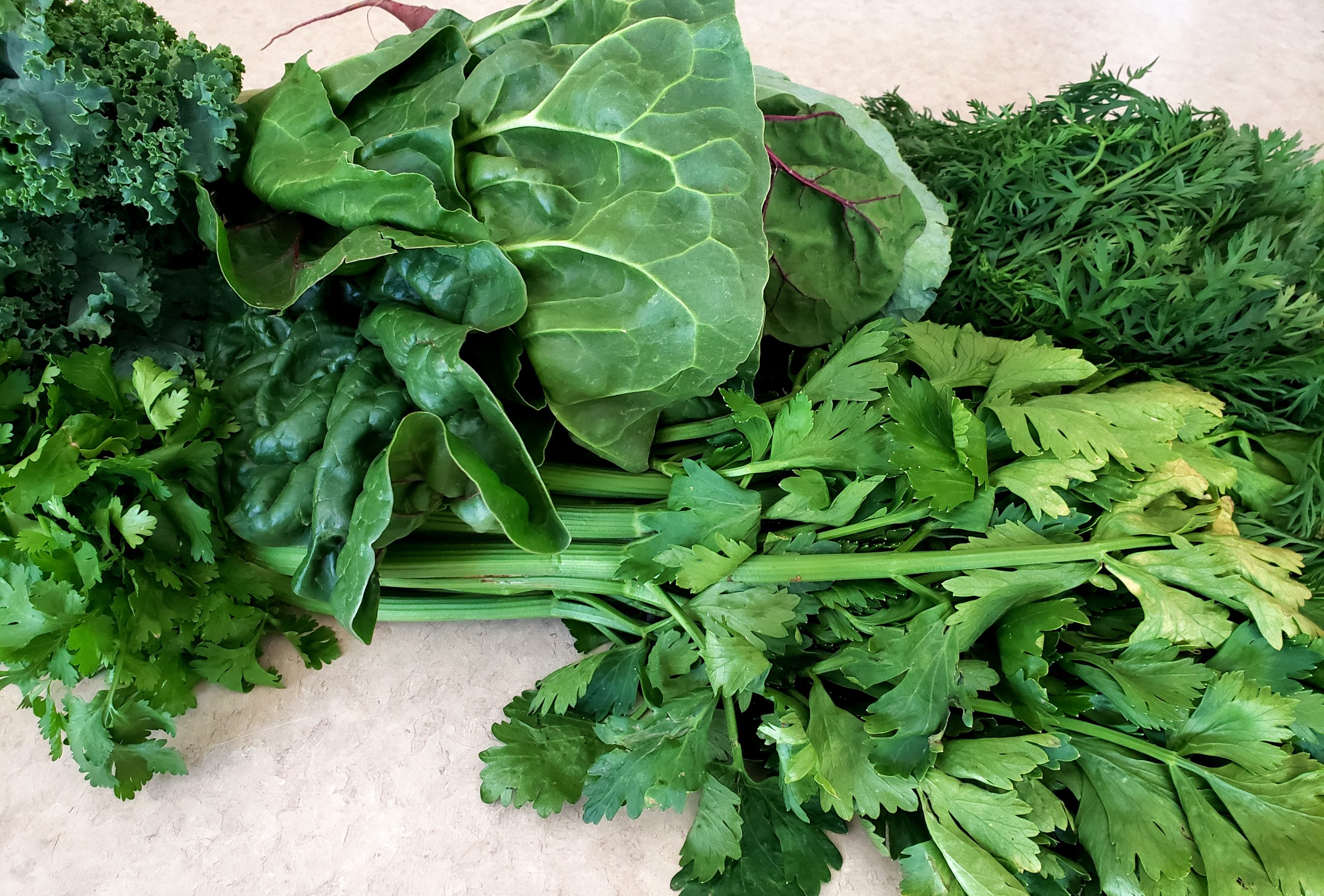
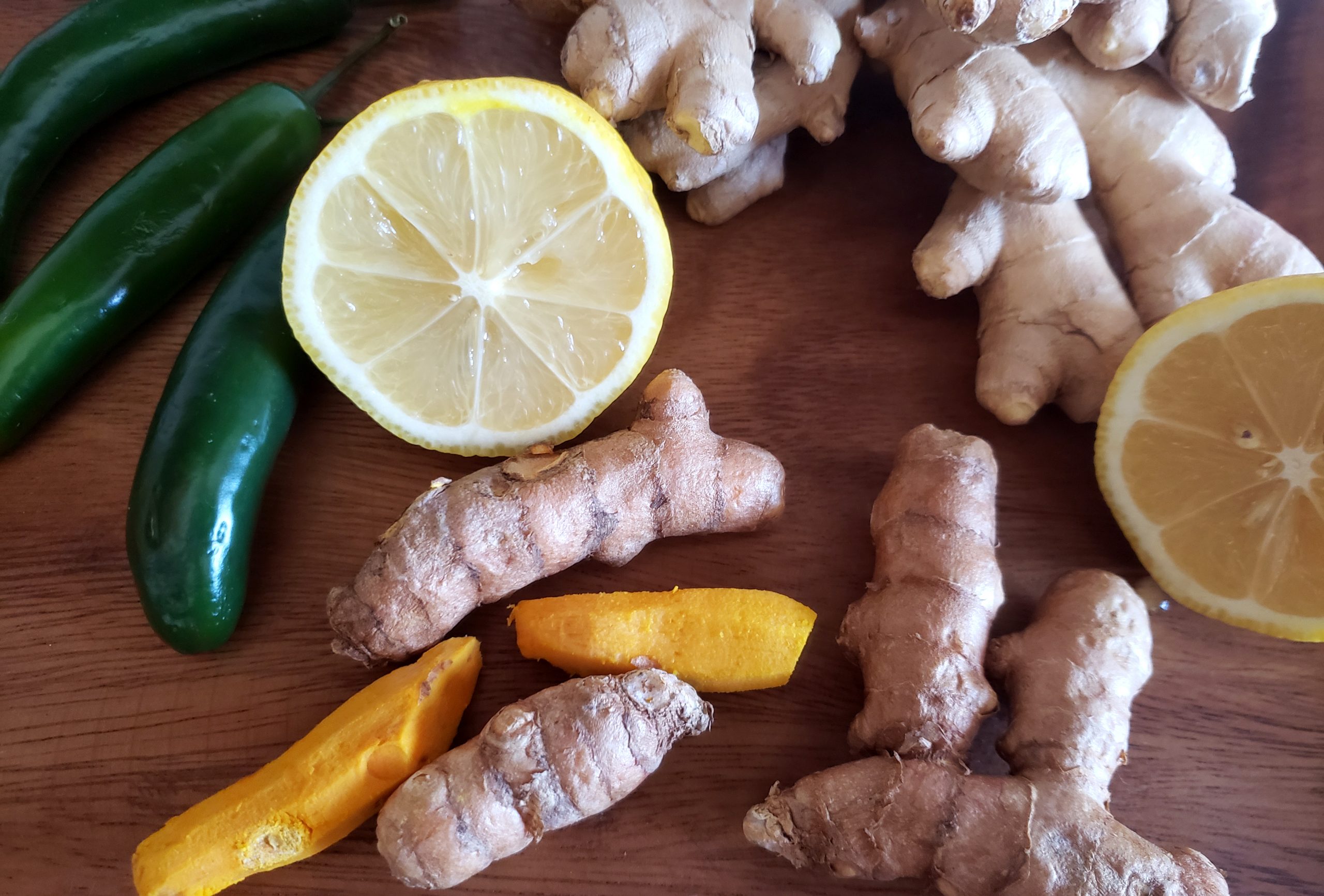
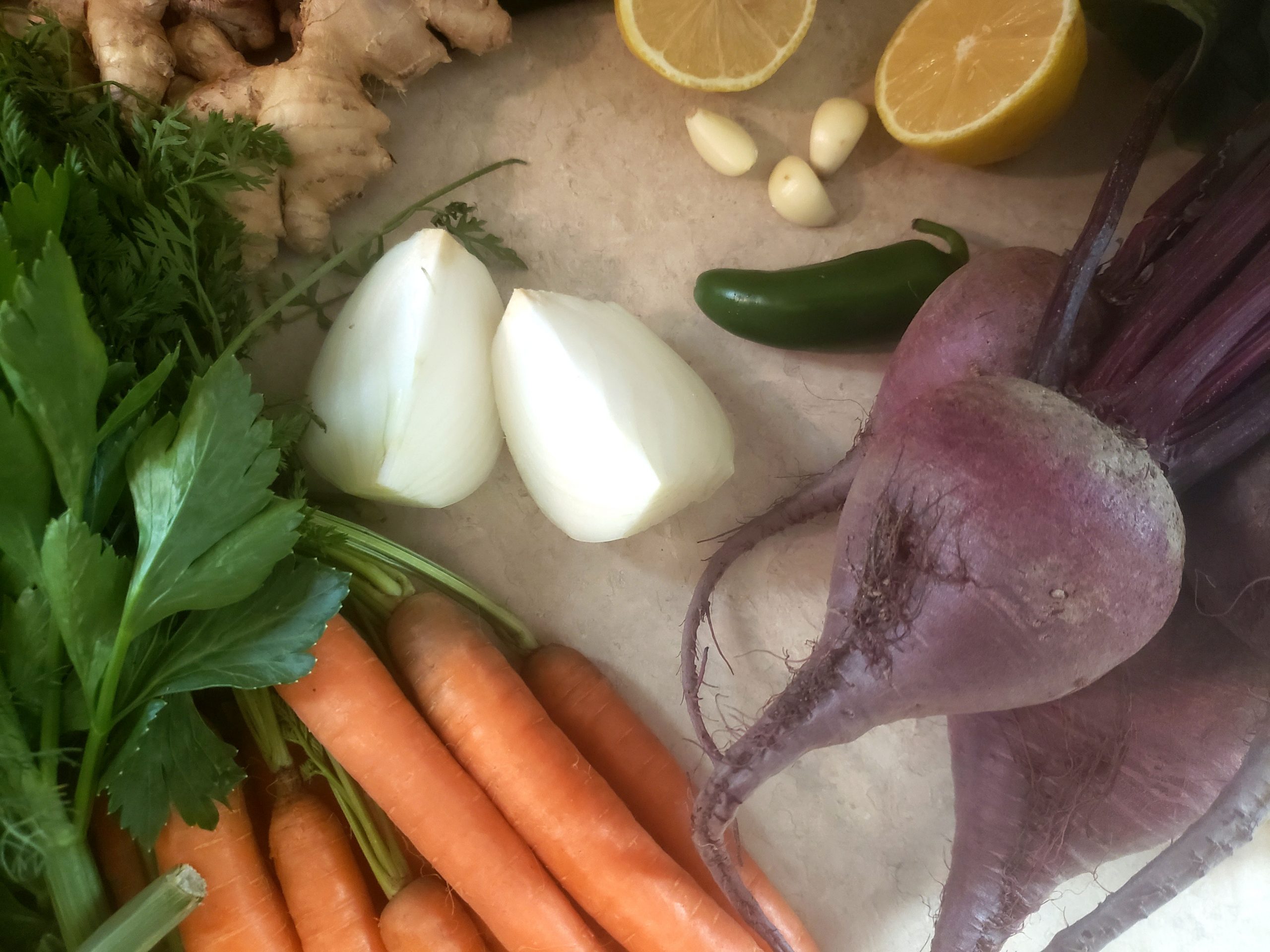
Ingredients
- 3 chicken backs*
- 3 chicken necks*
- 6 chicken feet*
- 3 to 5 cups of your favorite vegetables and herbs (or any you have at hand!); some ideas are carrots, beets, celery, root veggies, fresh parsley, fresh cilantro, shiitake mushrooms, or fresh rosemary
- 1 sweet onion, chopped (optional; use ½ onion or omit for Pitta)
- 1 to 2 serrano peppers, chopped (optional; omit for Pitta)
- 2 garlic cloves, chopped (optional; omit for Pitta)
- 3” cube ginger, chopped
- 1 tablespoon Agni Churna, Vata Churna, or any similar kitchari spice blend (optional)
- 1 gallon to 2 gallons water
- 1 to 2 tablespoons apple cider vinegar (optional; use 1 tablespoon or omit for Pitta)**
*I am using these ingredients because they provide the most collagen (especially the feet!) and are very flavorful. You can find them in many local chicken farms, farmer’s markets, local butchers, or health food markets. If you cannot find them, replace them with any bone-in, skin-on chicken such as a whole chicken, chicken legs, or drumsticks.
**I have added the apple cider vinegar as it is said that it facilitates the extraction of collagen from the chicken to aid in a more collagen-rich result. It does not leave a strong taste, but if you are sensitive to heat or acidity or simply do not like it, I suggest leaving it out. You’ll have a healing, collagen-rich broth nonetheless!
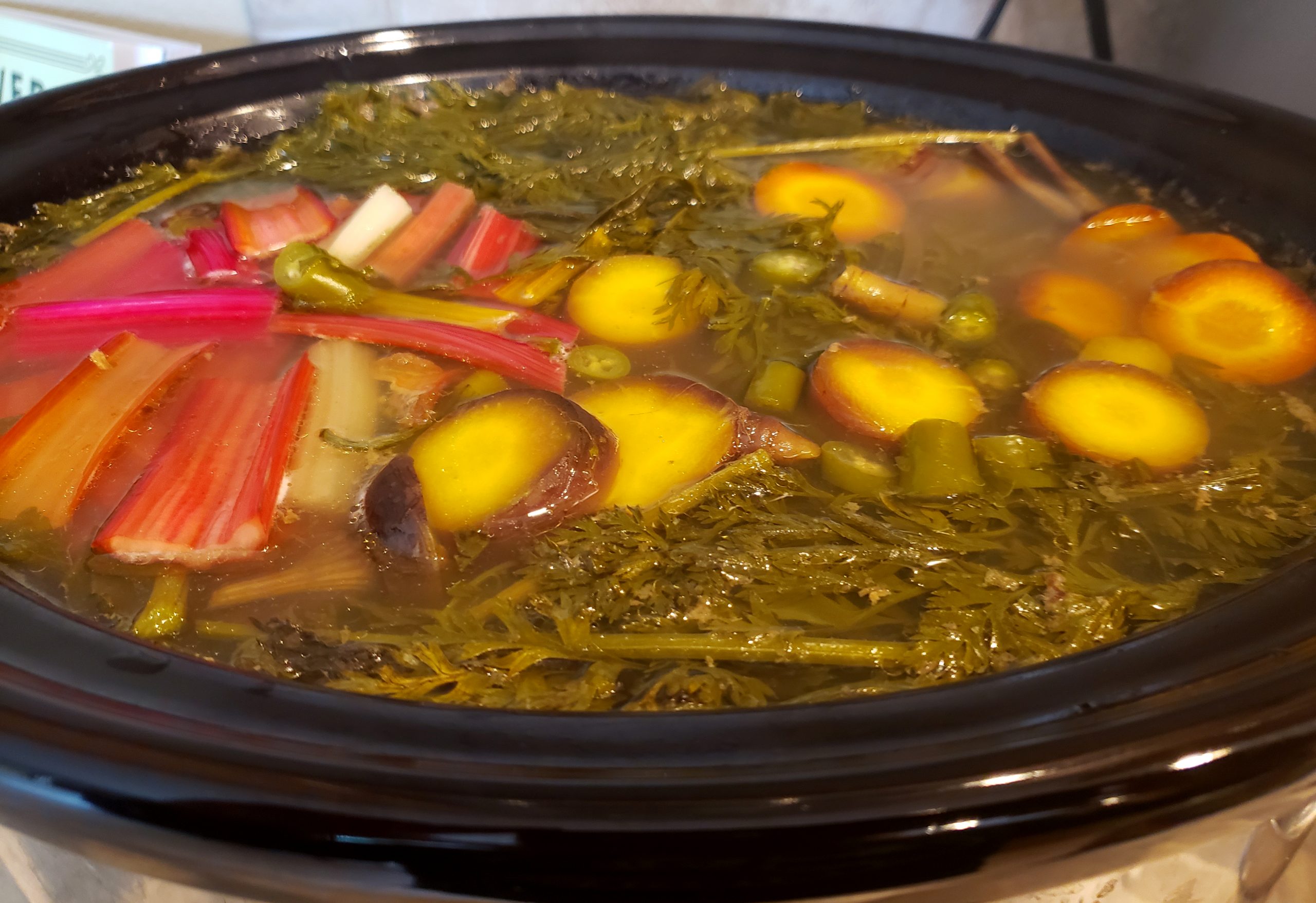
Directions
1. Add the chicken backs, necks, and feet to an empty crock pot that is at least 1 gallon in size.
2. Wash and chop the chosen veggies. Remember any vegetables will do, so use what you have at hand or any veggie that may have seen better days.
3. Add the chopped veggies to the crock pot.
4. If using, add in the chopped onion, serrano peppers, garlic, and ginger.
5. Carefully fill the crock pot with water just below the top. If available, filtered, reverse osmosis, or spring water will provide the best taste!
6. If using, stir in the apple cider vinegar.
7. Once ready, place the slow cooker on low and cook for at least 12 hours. This is an adequate amount of time, but ultimately I suggest cooking for 24 hours if you have the time. You can always take some as it cooking if you want a cup beforehand (assuming it has cooked for at least 12 hours). I have let it go for up to 48 hours and although I think it was still delicious, some individuals may feel it is too bitter tasting.
8. While cooking, add in water as the original water evaporates. This step is optional. It will provide you with more yield, but a less gelatinous result.
9. Once the cooking process is complete, place a large mesh strainer on top of a large gallon-size pot and place the pot into a clean and empty sink. Place the crock pot next to the sink and using a 2-cup measuring cup (or something similar) begin scooping out the broth and pouring it into the strainer. Discard the bones and cooked veggies as the strainer gets full.
10. As your pot of strained bone broth fills, place the strainer aside and pour the finished broth into a glass container that has an air-tight lid.
11. Repeat until you have strained the entire batch.
12. Sip a cup and appreciate the time and effort you have taken to focus on your health.
13. After cooling, place the jars of bone broth in the fridge for up to 5 to 7 days.
14. For healthy aging, muscle building, bone health, digestive health, and so much more, aim to get at least 8 ounces of broth daily.
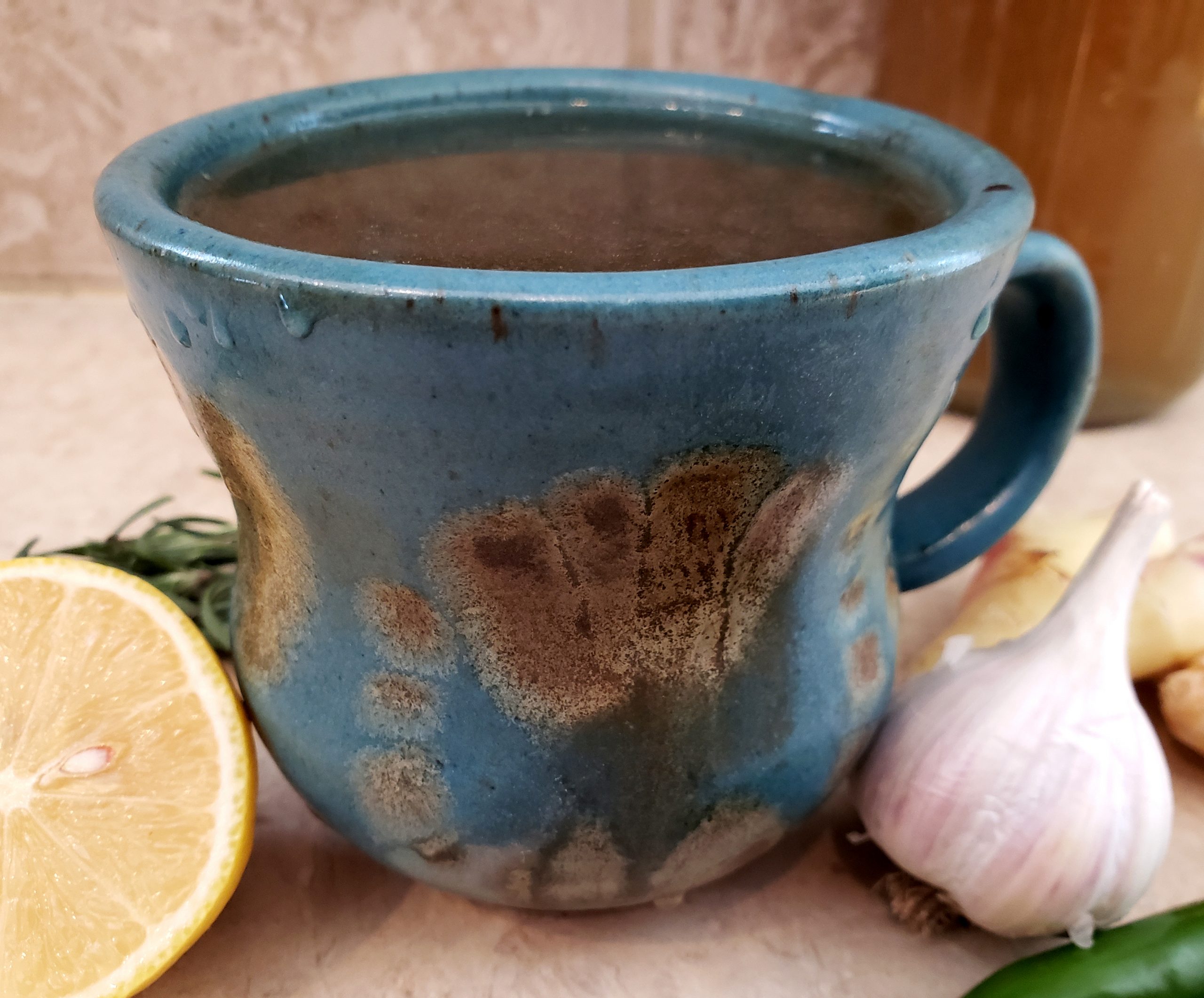
Additional Ways to Use Bone Broth
If you do not prefer the taste of bone broth or you do, but not every day, then have no fear! There are other ways to get your daily dose of bone broth in. Here are some of my favorites:
- Use as a base for any soup or stew recipe
- Use as a base for any kitchari recipe (or use 1 part water to 1 part broth)
- Replace bone broth with water when cooking any grain (rice, quinoa, millet, etc)
- Add a large splash to your veggies when you are sauteing them
- Add a large splash to your suitable leftovers when you reheat them to add moisture without watering down the flavor (I always do this with my kitchari leftovers which can dry out in the refrigerator)
- Blend a large spoonful of tahini into a cup of bone broth for added flavor, nutrients, and substance
- When warming up a cup, add in a large pinch of Agni Churna, a small pinch of pink salt and black pepper, and a splash of lemon or lime—these simple ingredients will really liven up your cup!
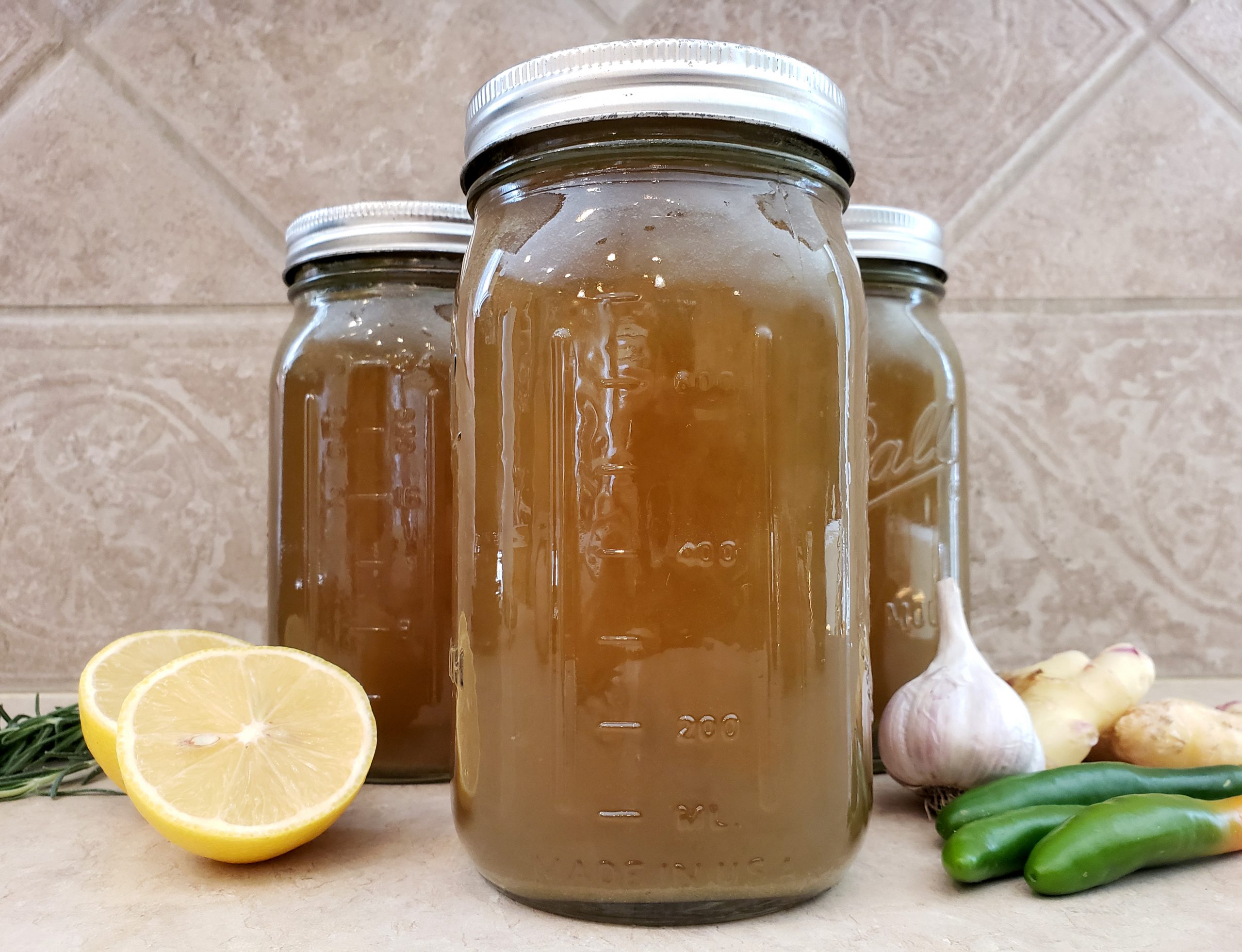
Discover more healing recipes with my 30-Minute Ayurvedic Cookbook!*
Discover over 100 herbal remedies in my Ayurvedic Herbal Medicine for Beginners book!*
*By ordering directly through these links, you are helping to support Svastha Ayurveda – Thank you!!

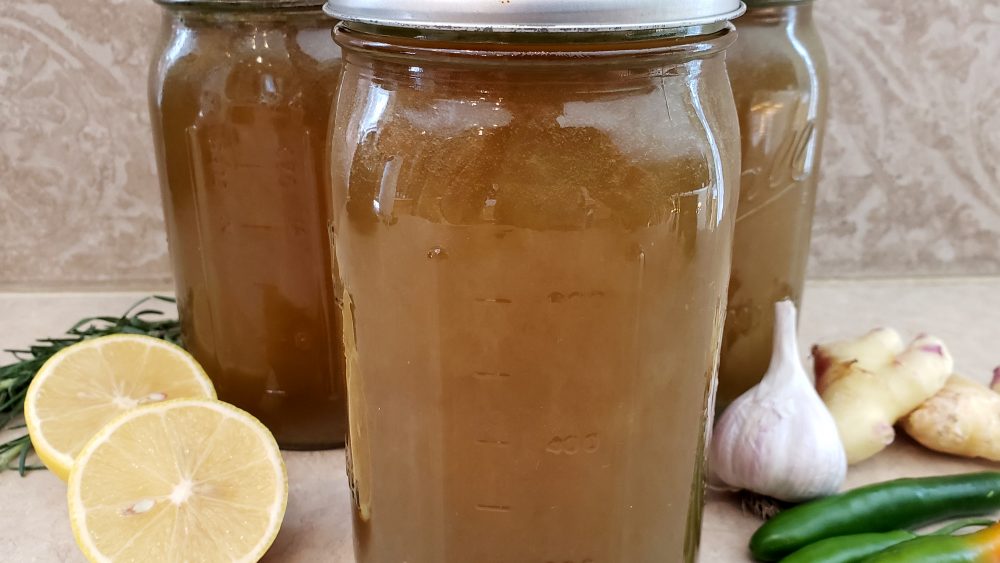
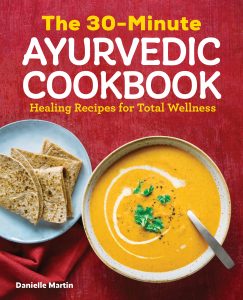
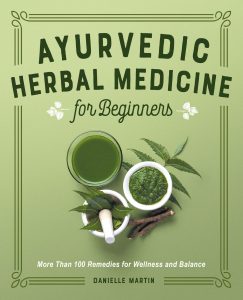

Did you have a protocol for Hypothyroidism and Vitiligo
Hi Savie,
Thank you for your question! I have not written on either of these topics as of now, but I am planning to do an article on supporting hypothyroidism in the near future. It is such a common condition and I am eager to write about it! If you have not already, you can sign up for my mailing list so you will get notified once it comes out.
I will also consider writing on Vitiligo as well, although I am not quite as experienced with this condition. I will see what I can do:)
Thanks again for writing in! Take it slow and be well..
Namaste,
Danielle